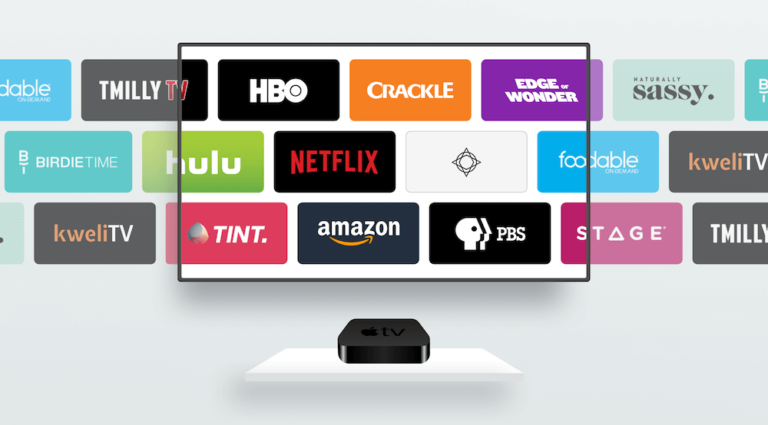Discover the game-changing OTT ad trends that are shaping the future of digital advertising. From AI-driven targeting and shoppable ads to interactive content and CTV dominance, this blog breaks down the top 10 trends revolutionizing OTT advertising in 2022. Learn how brands are leveraging personalization, programmatic ads, and new monetization strategies to capture audience attention and drive engagement. Whether you’re a marketer, advertiser, or content creator, staying ahead of these trends will give you a competitive edge in the fast-evolving streaming landscape. Don’t miss out on the future of OTT advertising—stay informed and stay ahead!
With anything new, there’s no one-size-fits-all approach. Companies wishing to capitalize on this type of advertising need a set of tools enabling them to test new strategies for their marketing campaigns toward optimizing for success along each step of the way.
Now, Over-the-Top ad trends look drastically different than they did just a few years ago. OTT streaming service providers constantly improve their offerings based on user feedback and new technological advances.
So what is OTT Advertising?
TT (Over-the-Top) advertising refers to ads delivered through streaming services and internet-connected devices, bypassing traditional cable or satellite TV. These ads appear on platforms like Netflix (ad-supported tiers), Hulu, Disney+, Amazon Prime Video, YouTube TV, and Roku. Unlike traditional TV ads, OTT advertising allows for precise targeting based on demographics, interests, and viewing behavior. For example, a fitness brand can show ads to users who watch health-related content on Hulu, or an e-commerce brand can retarget viewers on Roku based on their online shopping habits. This level of personalization makes OTT ads a powerful tool for marketers.

How Does OTT Compare with Regular TV Advertising?
OTT advertising offers several advantages over traditional TV advertising, primarily in targeting, flexibility, and measurement. While regular TV ads are broadcast to a broad, often generalized audience based on time slots, OTT ads are delivered directly to viewers through streaming services, allowing for precise targeting based on demographics, location, interests, and viewing habits. Additionally, OTT ads can be skipped or paused, offering more interactive options. In contrast, traditional TV ads are generally non-skippable and have a larger, less defined audience. OTT also provides real-time data analytics, helping brands assess ad performance and optimize campaigns, something that traditional TV lacks.
1. OTT Advertising Continues Its Rapid Expansion
The over-the-top space has already become among the most lucrative digital advertising channels. A recent study revealed that in 2021, total OTT ad spending surpassed $1.3 billion. This figure is certain to rise in 2022.
Thanks to technological advancements, video content will be available on more platforms. In other words, OTT advertising will become more widely available, allowing advertisers and publishers to target new audiences. For leveraging purposes, brands need to stay current with these OTT ad trends.
2. Streaming Services Push Conventional TV Toward Oblivion
The growing preference of consumers to watch their favorite shows on streaming services has led to a decline in traditional TV viewership. According to Nielsen, 2017 marked a tipping point when Americans spent more time watching digital video than live TV for the first time. What’s more, the growth of OTT ad spending is outpacing that of TV advertising. The rise of streaming video platforms has been instrumental in driving these OTT ad trends.

3. People Increasingly Watch Video Content On Mobile Devices
Cisco has predicted that in 2022, more people will watch video content on their phones, tablets, and laptops than they will on their TVs. Millennials are mainly driving this shift. They generally prefer to watch video content on a mobile device rather than on a TV screen. But regardless of which screen viewers choose to use, it’s clear that content consumption habits have evolved—and so should advertisers. OTT advertising allows brands to leverage these changes and capture larger audiences.
4. OTT Ads Use Creative New Features
OTT advertising is all about creativity and using new formats and features to entice users. This provides a myriad of opportunities for marketers looking to reach consumers with targeted messages in a way that’s more personal than ever before.
In OTT advertising, you’ll be able to use every tool at your disposal – from video, audio, still images, geo-targeting and even haptic feedback – to optimize your ads for an enjoyable customer experience. For example, stickers and emojis have become an increasingly popular format for advertisers to target specific niche audiences.
In a way, these ads have been around for years because of Instagram. Now that people rely on apps like Snapchat more than ever, stickers and emojis have come into play because they allow brands to advertise fun new characters.
5. Multiplication Of Immersive OTT Ads
Immersive ads are undoubtedly one of the most critical emerging OTT ad trends. The future of advertising will focus on them. The recent surge of interest in augmented reality (AR) and virtual reality (VR) is why we’ll see an increase in immersive ads. Although other types of virtual reality ads will undoubtedly come into play, 360-degree videos will be a big deal for immersive ads.
Augmented reality is no longer viewed as a passing fad. It’s moving from something novel to more practical and useful; it won’t be long before AR becomes part of our daily lives and marketing strategies. As these mediums grow more popular, OTT advertisers will begin to take advantage of them. They’ll create relevant ad content that’s interactive and easy to experience, even if you don’t have a headset or specialized software installed on your device.

6. Increasing Interactive Ads
OTT ads, by their very nature, need to be engaging. For example, a video ad can include a call to action button that will take users directly to their favorite service or brand website. Even text ads could feature an image or embedded content that makes it more than just another banner ad. That’s good news for OTT advertising professionals and marketers who want to increase customer engagement and interaction.
Whether video or text, interactive ads make it much easier for customers to access your product/service and much harder for them to ignore what you’re offering.
7. OTT Advertising Becomes More Personalized
Personalization is one of the significant OTT ad trends in 2022. OTT advertising is becoming more personalized, targeting viewers based on what they’re watching at any given time. For example, suppose you typically spend your evenings binge-watching old episodes of Law and Order. An OTT advertisement from NBC might pop up during a commercial break urging you to watch season 18 live on Hulu Plus—and get a deal for new Hulu users that week.
More people are ditching cable subscriptions for streaming services like Netflix, Amazon Prime Video, and Hulu. As these services grow in popularity, there’s still room for advertisers to reach consumers through them: Over half of US adults use an OTT service. That’s good news for advertisers who want to attract consumers who spend most of their time on their TVs.
8. OTT Ads Use Targeting Capabilities Of Social Networks
Social networks and their targeting capabilities make all forms of advertising more relevant to consumers. Messaging services like WhatsApp or Facebook Messenger are increasingly deployed for everything, including sending e-commerce ads.
In addition, with AI offering hyper-targeting features on an individual level, we’ll see personalized OTT advertising in line with a person’s life events, such as birthdays or anniversaries. When it comes to ads reaching a specific audience and matching a brand’s image, advertisers want targeted results. Ad blockers now make it easy to block online ads. Still, it’s not easy to avoid OTT ads, especially when they come via video streaming services.
9. OTT Ads Rely On Artificial Intelligence & Machine Learning
We can see now that artificial intelligence (AI) and machine learning (ML) have significantly impacted all marketing channels.
Machine learning algorithms analyze a vast amount of data. We can create new models for targeted audience segments based on that. This type of technology utilizes self-learning to make predictions and establish objectives to achieve, via different business rules from historical data or test results.
Artificial intelligence targets audiences based on their behaviors and delivers personalized ads to them. AI is increasingly used in OTT advertising, and its development speed will surprise us in the coming years. AI in OTT advertising could help brands reach more customers and provide users with an enhanced experience.
10. Ads Become Shorter Yet More Focused
Among the 2022 OTT ad trends is the fact that ads are becoming shorter in length, focusing on quality over quantity. For example, an OTT ad placed as a pre-roll before a video clip can grab someone’s attention better than a 15-30-second commercial.
Conclusion
Thanks to major players like Amazon and Netflix, OTT advertising is rapidly expanding. Even as they become increasingly aggressive with their ad strategies, there’s still room for growth beyond these well-known brands. More than half of US consumers spend time on OTT streaming services each week — that means millions of opportunities for brands and retailers to sell through ads across platforms.
At GoDRTV, we offer a wide range of choices in OTT advertising. Please contact us now to learn about exciting and up-to-date OTT advertising opportunities.
